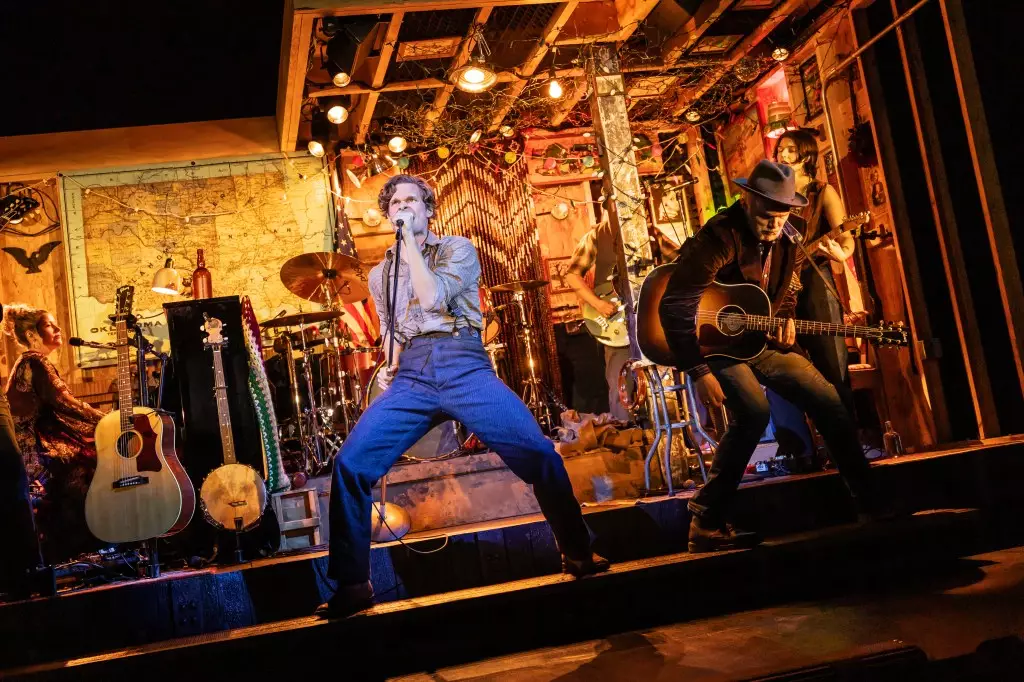The Tony Awards season is an exhilarating time for Broadway, yet it also serves as a bitter reminder of the slow, creeping malaise affecting the theater landscape. As we march towards the nominations announcement on June 8, an unsettling trend surfaces: a notable decline in ticket sales across several contested productions. While the anticipation builds, with nearly 40 shows vying for recognition, the inconsistencies in attendance shine a spotlight on the dire need for introspection in the industry. The numbers don’t lie—certain productions have not only fallen from grace, but they are also dragging the reputation of Broadway with them.
The irony of the awards season is that the very acclaim some shows strive for can be a double-edged sword. Notably, many contenders are experiencing dwindling attendance despite their nominations. With about 14 shows reporting box office slips for the week ending May 18, it’s vital to ask the hard questions: Are awards being diluted by a lack of quality productions, or are audiences simply finding better uses of their time and money? This past week has shown small incremental gains for some shows, yet it’s impossible to overlook that the overall trajectory is still downward.
The Increasing Significance of Nominations
Interestingly, contenders like “The Picture of Dorian Gray,” which boasts six nominations, managed to garner positive attention alongside a box office spike to almost $1.3 million. This rise is notably attributed to the scheduling of an extra performance, raising questions about the industry’s reliance on gimmicks rather than the strength of the storytelling itself. One could argue that such strategies may ultimately lead to performative success rather than genuine audience engagement. Shouldn’t the sheer merit of the show itself be enough to attract a crowd?
Conversely, not every nominated production has experienced a burst of success. “Smash,” for instance, featuring a meager two nominations, plummeted to just above $790,000—a clear indication that the allure of an awards nod does not compensate for subpar offerings. Attendance at 78% capacity suggests that audiences are becoming increasingly discerning, prioritizing quality over mere hype.
The Power of Star Power
In a landscape fraught with mediocrity, star-studded productions still hold a card of magnetism. Productions like “Good Night, And Good Luck,” which surged to nearly $4 million, benefited from George Clooney’s celebrity status. However, we must interrogate whether it’s Clooney’s presence or genuine narrative merit that drives audiences to theaters. The question remains: Are we becoming too enchanted by celebrity appearances rather than the stories being told?
The same can be said for productions with limited nominations. “Redwood,” for instance, saw a vengeful swoop upward despite being shut out. Still, its overall attendance hovered below 85%. The phenomenon may illustrate the theatergoer’s dilettante attitude—enticed only when the stakes appear low and momentum is fleeting. Yet, we can’t overlook the artists who pour their hearts into making art often neglected and overshadowed.
Unpacking the Shut-Out Syndrome
Then there’s the phenomenon of shut-out productions. Take “Othello,” which continues to dominate the box office despite receiving no nominations. With a robust gross of over $3 million—even witnessing packed performances—the success of “Othello” begs for deeper exploration. Why are certain shows able to rise above critiques that leave many contenders gasping for air?
This brings to light the question of arts funding and historical resilience. The arts community may be at risk of being financially suffocated in the future if we fail to nurture lesser-known productions while inexorably prioritizing marketability over artistry.
Moreover, productions like “Death Becomes Her” and “Glengarry Glen Ross”—each with only one nomination—still managed to perform remarkably well. Capitalizing on nostalgia and previous acclaim, do these shows signal an end to fresh talent booming through? Beyond the metrics, are audiences merely looking for a safe bet in an increasingly uncertain world?
Is the Broadway Illusion Shattering?
We are heading towards precarious waters as Broadway’s fate seems to teeter on the precarious balance of accolades, celebrity, and quality storytelling. While the industry touts growing revenue and attendance figures, we must confront a stark reality: that numbers seldom encapsulate the truth of artistic integrity or audience engagement. As the Tony Awards loom, the real question remains: is Broadway capable of rejuvenating itself, or will it languish under the weight of its past choices? The thirst for a vibrant and sustainable theater ecosystem is more pressing than ever, requiring not just applause, but a radical shift in how the many players in this sphere appreciate and promote the art form.

